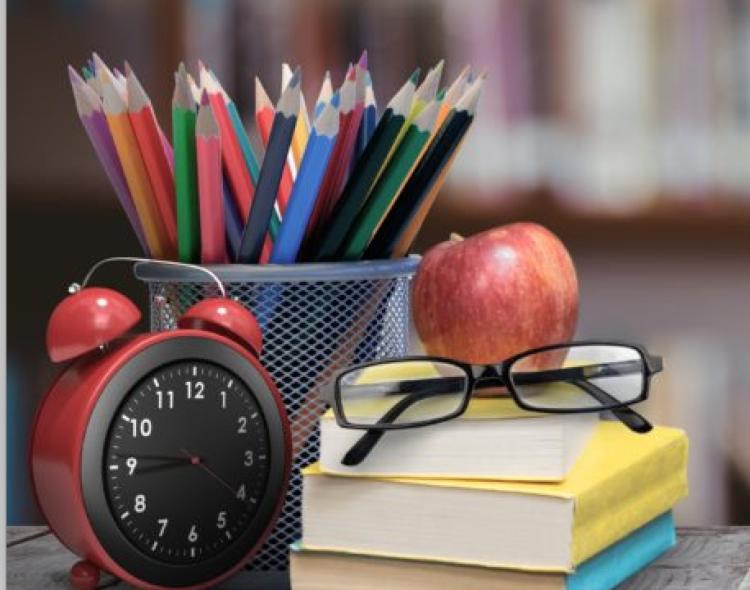
This is the second of a three-part series examining the issue of school supplies. Part 1 discussed family expenditures on classroom items. Part 3 will assess state expenditures for supplies and books.
To promote the 2nd Annual Governor’s School Supply Drive (and take a jab Republican lawmakers), Governor Roy Cooper commented,
Teachers shouldn’t have to dip into their own pockets to cover the cost of classroom supplies that their students need to learn. One day we’re going to convince the legislature to make a greater investment in public schools, but until then, we want to do everything we can to get students and teachers the supplies they need for a successful school year.
Stories about school supplies are a common feature of back-to-school reporting, and nearly all of them mention the fact that teachers spend their own money to prepare for the new school year. But there is much we do not know about how much teachers spend, what they buy, and how they feel about the resources provided to them by their school, parents, and the community.
How much does the average educator spend?
In recent years, at least three entities have attempted to estimate out-of-pocket expenditures for public school teachers nationwide. In their 2013 Retail Market Awareness Study, the Education Market Association, a trade organization for the educational products industry formerly known as the National School Supply and Equipment Association, estimated that teachers spent an average of $485: $149 for school supplies, $198 for instructional materials, and $138 for other classroom materials. Curiously, even though five years have passed since its release and more current studies have been published, the mainstream media continues to reference findings from the 2013 study.
A survey conducted by SheerID and Agile Education Marketing last year found that teachers spent an average $468 for classroom items during the 2016-17 school year, with some respondents saying that they spent upwards of $5,000 on items for their classroom. Moreover, 77 percent of teachers report that they spent $200 or more. Interestingly, the average has dropped since 2014, the year that out-of-pocket spending reached an average of $510 per educator, but it’s not clear why.
More recently, teachers who were selected to participate in the 2015–16 National Teacher and Principal Survey (NTPS) were asked to estimate how much of their own money they spent on unreimbursed classroom supplies. The National Center for Education Statistics, the research arm of the U.S. Department of Education that oversees the project, used NTPS data as the basis for their May 2018 report, Public School Teacher Spending on Classroom Supplies. The report concluded,
Among teachers who spent any of their own money on classroom supplies without reimbursement, the average (mean) amount spent was $479, and the median amount spent was $297. About 44 percent spent $250 or less, while 36 percent spent from $251 to $500.
Thus, the consensus is that teachers spend an average of $500 of their own money on classroom items, excluding cash donations and occasional reimbursements by PTAs and schools. Presumably, these estimates also consider the Educator Expenses Deduction, which is a federal income tax deduction of up to $250 per educator or up to $500 if married filing jointly and both spouses are eligible educators. (In some cases, educators can deduct additional out-of-pocket purchases as unreimbursed employee expenses. Talk to a trusted tax professional for details.)
Notably, the three studies mentioned above derive their estimates from self-reported information. Given the pitfalls of relying on self-reported data, we should refrain from making uncritical assessments. None of these studies appeared to verify the accuracy of the information, nor did they adequately control for variables that may skew their estimates. Certainly, their relatively small sample sizes mean that we should take great care when using these studies to make inferences about the population of teachers generally.
What do educators purchase?
Unlike the Retail Market Awareness Study, neither the SheerID survey nor the NTPS questionnaire defined the term “classroom supplies” or asked teachers to itemize expenditures by type. Yet, even the Retail Market Awareness Study does not offer a precise description of items purchased. This is a critical shortcoming because we cannot determine if the purchases were for essential or nonessential items.
As the spouse of a public school teacher, I have observed that there are three types of teacher expenditures – décor, supplies, and instructional resources. Décor, motivational posters, and colorful borders are optional. Paper, pencils, and other supplies are essential. Instructional resources, such as lesson plans, curriculum guides, and professional development materials, are helpful but need not be purchased, thanks to the massive collection of free resources available at public libraries and online.
Unlike items that are optional or available for free, teachers have a right to be annoyed when they are forced to use their own money to purchase classroom basics. There is a reasonable expectation that schools and parents provide standard school supplies. But what qualifies as “standard” supplies? I would argue that schools and parents should provide children with something to read, something to write on, something to write with, and something to keep their work organized.
But there is no consensus on the matter. Do materials purchased for project-based activities, creative lessons, and cross-curricular assignments in math, science, English, and social studies qualify as essential? Who is responsible for materials for art, music, physical education, electives, and self-contained classrooms for special needs children? Where does technology and laboratory equipment fit into this discussion?
What do teachers say about out-of-pocket expenditures?
As the introductory paragraphs make clear, politicians and pundits may use the issue for political gain. As convenient as it is to charge that certain lawmakers, usually Republicans, “force” teachers to spend their own money, the truth is that teachers will make out-of-pocket purchases regardless of who is in charge or how much taxpayer money elected officials pour into their public schools.
Indeed, complaints about out-of-pocket expenditures are not new. In a March 1993 Educational Leadership article titled “The Hidden Costs of Teaching,” Glenn Latham and Karen Fifield reported results from a survey of 360 teachers about their voluntary expenditures for the year. The found,
On average, the teachers surveyed spent $444 annually. The range of money teachers spent can be seen in Figure 1, which shows that 8 respondents reported spending no money at all while 31 respondents (approximately 11 percent of all respondents) spent more than $1,000. Of these, 25 spent between $1,000 and $1,999; two spent between $2,000 and $2,999; one spent between $3,000 and $3,999; and three spent between $4,000 and $5,000.
More importantly, Latham and Fifield’s study also solicited comments from survey respondents. The authors placed their responses into three categories:
- Outrage and frustration at public and administrative insensitivity to the lack of funds available to teachers to support their classroom work.
- Recognition of the critical importance of teacher contributions to the effectiveness of instruction.
- Acceptance of a reality that teachers will always need to subsidize their teaching with out-of-pocket funds.
In other words, some were willing to place the blame squarely on taxpayers and administrators, while others skipped the blame game altogether and simply accepted the status quo.
But are educators who express “outrage and frustration” the exception or the norm? It is hard to square complaints from North Carolina teachers about the issue when they report that most of their needs are addressed. Their answers on the 2018 Teacher Working Conditions Survey are instructive.
2018 N.C. Teacher Working Conditions Survey Responses
| Q3.1 Please rate how strongly you agree or disagree with the following statements about your school facilities and resources. | Percent Agree or Strongly Agree |
| Teachers have sufficient access to appropriate instructional materials. | 75.5% |
| Teachers have sufficient access to digital content and resources. | 84.5% |
| Teachers have sufficient access to instructional technology, including computers, devices, printers, software and internet access. | 80.3% |
| Teachers have access to reliable communication technology, including phones, faxes and email. | 92.5% |
| Teachers have sufficient access to office equipment and supplies such as copy machines, paper, pens, etc. | 81.4% |
| Teachers have sufficient access to a broad range of professional support personnel. | 80.9% |
| The school environment is clean and well maintained. | 81.3% |
| Teachers have adequate space to work productively. | 88.7% |
| The physical environment of classrooms in this school supports teaching and learning. | 87.6% |
| The reliability and speed of Internet connections in this school are sufficient to support instructional practices. | 84.2% |
The bottom line is that most teachers report having sufficient access to instructional materials, technology, office equipment, and supplies at their schools. Either 1) the survey is baloney and schools seldom provide the resources that teachers need, 2) teacher complaints are baloney, and they have the resources that they need, or 3) teachers are satisfied with resources provided by their school but want to do more than those resources will allow. Of course, the third option would mean that the resources are, in fact, insufficient.
Conclusion
Those who expected a cut-and-dry answer to the question posed in the title are bound to be disappointed. We know how much teachers say they spend on classroom items, but we do not know if those estimates are reliable. Even if they were, we’re not sure what educators purchase and why. We’re not sure if educators are genuinely displeased with the resources provided to them by schools and parents or merely want to do more than those resources will allow. Only two things are certain. The issue is not new, and complaints will persist, regardless of political and economic circumstances.




